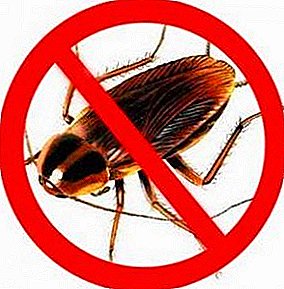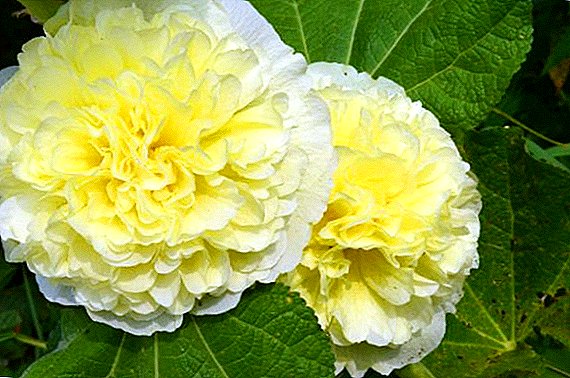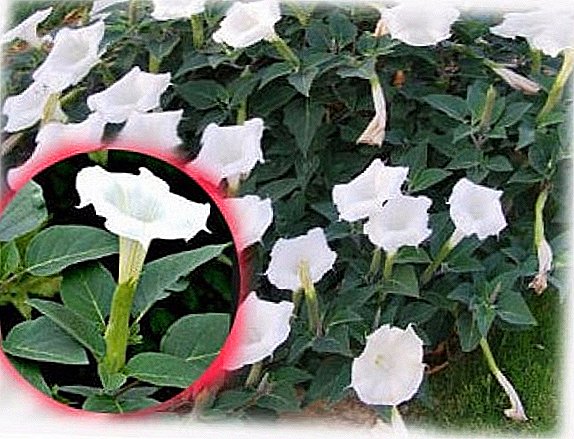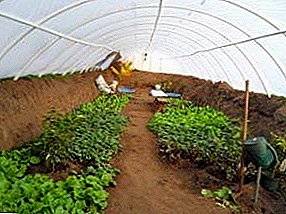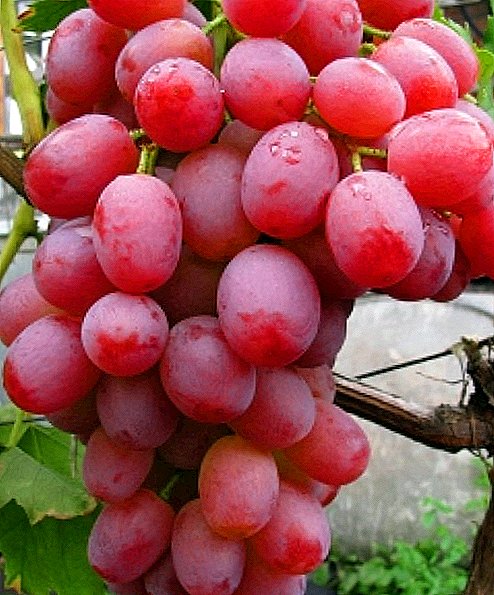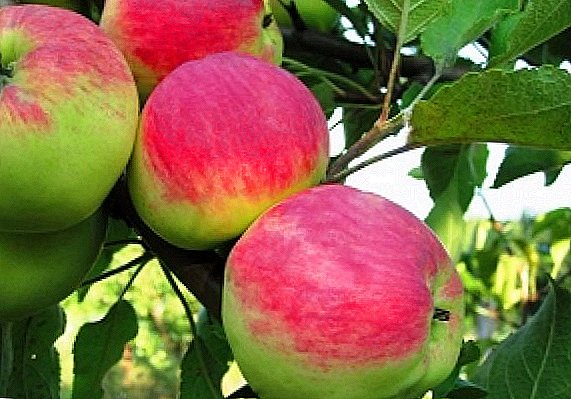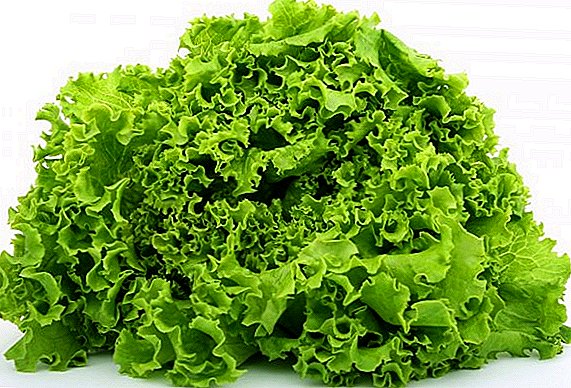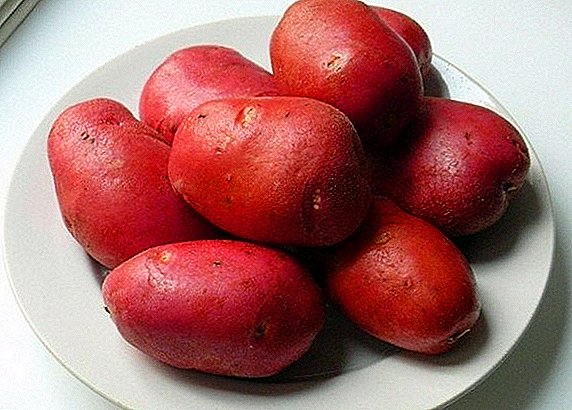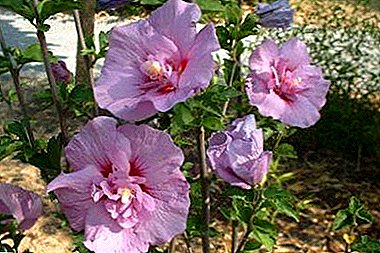
Spectacular and bright variety can be bred at home and in the open field. Abundantly flowering bushes decorate homestead plots, flower beds, flower beds, are used as a hedge.
They are combined with roses, coniferous shrubs, and other perennials. We will talk about popular chiffon subsorts (some translate the name of the plant in this way), such as Madzheta, White, Pink and others.
In addition, in this article you will learn how to plant such a plant, how to care for it and how to save it from common diseases.
Botanical description and Latin name
Hibiscus Syrian Chiffon (Hibiscus syriacus Chiffon) - derived variety of the genus Hibiscus of the Malvaceae family. The synonym for the name of the variety is Syrian Chiffon. The flower is called the Syrian rose, Catmea. Deciduous shrub up to 2 - 3 m. Crohn in diameter up to 1 - 1, 7 m. Stems are erect, vertical, dense. The annual growth of shoots is 20 - 35 cm. The leaves are oval, jagged at the edges, three-lobed, dark green in color.
The variety has large double and semi-double flowers of various shades. - pink, purple, white flowers with a colorful pattern on the petals. The diameter of the flower is 10 - 12 cm. Flowering lasts all summer, until September. In the fruit - boxes ripen smooth seeds - seeds. The root processes are branched.
History of occurrence and geography of habitat
Natural habitat - India, China. In Europe, the flower began to breed in the 18th century. At the end of the 20th century. R. Woods, a professor at the University of Cambridge, developed several varieties of Syrian hibiscus, combining them into a series of chiffon.
Subspecies of a plant differ in large flowers and frost resistance. In the open field, hibiscus Syrian chiffon is grown in the Caucasus, Crimea, Moldova, Central Asia.
Chiffon subspecies
Pink (Pink)
Differs in compact dense krone. The height of an adult bush is up to 2 m, the width of a bush is 1 - 1.5 m. The stems are vertically growing, gray-brown in color. Leaves alternate, dark green. Terry flowers are large, up to 10 - 12 cm in diameter. Petals pale pink. It blooms throughout the summer.

Magenta
A tall bush reaches up to 3 m in height and up to 2 m in diameter. It blooms to mid-October with red flowers with purple tint. Flowers in diameter of 10 - 12 cm. Petals are terry.

China (China)
Deciduous shrub up to 2 -3 m. The diameter of an adult bush is 1.5 m. It can be grown as a standard tree. The leaves are oval, rich green in color, up to 10 cm in length. Blooms in early summer, flowering continues until early October. The flowers are large, 10 - 12 cm in diameter. The color of the flowers is white with dark red rays on the petals at the core.

White (White)
The bush grows up to 3 m in height, in width - up to 50 - 60 cm. Average growth of shoots, 15 - 20 cm. Leaves are dark green, oblong, jagged along the edges. Flowering is long, begins in July. The flowers are large, double, white with a yellowish core. Diameter of a flower is 10 cm.

Lavender (Lavender)
Tall shrub. The height of the shoots is up to 4 m. The leaves are dense, ovate, toothed, three-lobed, richly green in color. The flowers are large, pyatilepestkovye, up to 10 cm in diameter. Coloring - soft lilac with a pink shade.

Planting and maintenance in the open field
Temperature Loves heat, the optimum air temperature is 20 - 25 ° C. With abundant watering bravely endures the heat. Maintains in winter lowering the temperature to - 20 - 25 ° C.
Watering
Watering in the summer should be every other day, abundantly. For irrigation using warm clean water.
Shine
The lighting is bright, diffused. Direct rays can leave burns on the leaves. In the shade the bushes bloom badly, the stems are drawn out. The optimum landing site is east and west.
Planted plant in a place protected from drafts and gusts of strong wind.
Priming
The soil for the plant should be loose, light, fertile, permeable. Soil composition:
- leaf earth - 3 hours;
- sod land - 4 hrs;
- sand - 1 hour;
- humus - 1 h;
- drainage (crushed stone, expanded clay, ceramic splinters).
Pruning
- In spring, old shoots are shortened by a third of their length.
- In the autumn bushes are thinned out - old stalks are cut out at the base.
- When transplanting pruned weak and damaged shoots.
- The main trunk is not trimmed.
With the help of shape-cutting trimming can be grown as a standard tree, creating a different shape of the crown in the form of a cube, a ball, a pyramid.
After pruning, it is necessary to mulch the topsoil with compost or peat. to nourish and protect the root system.
Top dressing
 In April, nitrogen supplements are applied to stimulate the growth of young shoots. From June to early autumn phosphate fertilizers are required for bud formation. In late autumn, the bushes should be fed with potash fertilizers.
In April, nitrogen supplements are applied to stimulate the growth of young shoots. From June to early autumn phosphate fertilizers are required for bud formation. In late autumn, the bushes should be fed with potash fertilizers.
Balanced minerals with a high content of iron and magnesium are regularly used to support the growth and prevention of diseases.
Fertilizers are applied 1 time in 12 - 14 days.. Liquid fertilizing, introduced through watering. Granules and powder are embedded in the soil, are made only after abundant watering. Organic fertilizers (humus, compost, peat) alternate with mineral dressings, are used as mulch to preserve the heat and moisture of the soil.
Transfer
In temperate and cold climates it is recommended to plant ready strong seedlings from the nursery, with a good root system. Young bushes are recommended to replant in the spring. Rooting time - up to 1 - 1.5 months.
Transplant procedure:
- a landing pit is being prepared (in accordance with the root volume);
- the plant is extracted from the tank together with the earthy clod;
- dry root processes are cut;
- bush is set in the hole, covered with soil;
- abundant watering;
- mulching of the upper layer.
Important: pots and pots in the spring are taken out into the fresh air, containers can be prikopat in the garden.
Wintering
In warm climates, shelter for adult plants is not required. It is enough to cut the bushes, to mulch the soil with leaves, peat. Young seedlings for the winter harbor coniferous spruce branches. At the beginning of winter, tied with sacking. In temperate latitudes additional protection is required. Bushes are covered with coniferous branches, leaves, straw. With the beginning of the first frost the plant is covered with agrofibre. In cold climatic conditions for the winter, plants are dug up, transplanted into temporary containers. Containers are transferred to a well-lit place in the house until next spring.
The shelter is removed at a temperature of 12 - 14 ° C gradually. Need to adapt to the bright sun. The soil is cleared, loosened.
Growing up
Seeds
 Seedlings grown in the greenhouse. Pre-seeds are stratified (sowing stored in the refrigerator for up to 3 weeks). Growing pattern:
Seedlings grown in the greenhouse. Pre-seeds are stratified (sowing stored in the refrigerator for up to 3 weeks). Growing pattern:
- seeds are distributed in the tank at a distance of 5-7 cm;
- sowing sprinkled with a mixture of sand and peat, well moistened;
- the container is covered with a film;
- seedlings are ventilated daily, moistened;
- the light is bright, the air temperature is 25 - 27 ° C;
- when 2-3 leaves appear, the seedlings are swooped into separate containers;
- young bushes are planted in the open ground the next spring.
Cuttings
Cherenkovat recommended after spring pruning. Healthy adult tops of shoots are selected.
On each handle should be 2 - 3 internodes.
Rooting rules for cuttings:
- at the base of the cutting the lower leaves break off;
- the basis is dried, processed by a growth factor;
- cuttings are placed in water or buried in a wet substrate;
- 3 weeks later, the cuttings are planted in separate pots;
- rooting temperature is 18 - 22 ° C, flowering is expected in a year.
Briefly about diseases and pests
- The buds dry out and the leaves turn yellow from overdrying of the soil and dry air. Requires abundant watering.
- Root the roots from an excess of moisture and fertilizer.
- Leaf chlorosis and fungal infections are treated with zircon, cytovitis.
- From aphids and spider mites save the treatment of bushes fitovermom.
Similar flowers
- Kalistegiya terry (Siberian rose). Pale pink lush flowers persist until late autumn.
- Malva pink. The height of the bush is up to 2 m. The leaves are toothed, the flowers are large, of various colors.
- Malva forest "Moravia". Bush srednerosly, up to 1.5 m. The flowers are rich pink with bright red rays on the petals.
- Malva forest "Primley Blue". Serrated leaves, green. The flowers are light purple, large.
- Stockrose pink "Chater's Double Icicle". Tall bush. Flowers gently - white, terry.
Observing the simple rules of caring for an unpretentious and hardy hibiscus Syrian Chiffon, you can expect lush and bright bloom throughout the summer.



